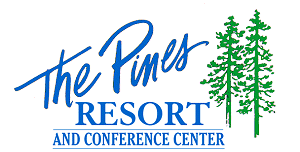 On Beautiful Bass Lake, California |
 On Beautiful Bass Lake, California |
|
Second eaglet discovered at Bass Lake
|
|||||||||||
The history of Bass
Lake's eaglets |
||
| The story of bald eagle #31 — the
female that produced Bass Lake’s first eaglets — is a heart-warming saga
of a creature saved by wildlife biologists and striving to make its way
in a contaminated world. It is recorded by Mike Smith, an eagle specialist
who would like to think #31 is still alive. If she is, she would be 11
years old. Two weeks after hatching on a lake near Pit River in Northern California, she was taken from her nest by biologists and moved to Santa Catalina Island, as part of an Institute for Wildlife Studies project to reintroduce eagles to the island. Once relatively abundant on the island, the eagles’ habitat was ruined by DDT. Thirty-five days before her arrival, biologists removed a DDT-addled egg from an active bald eagle nest and replaced it with an artificial one. At the end of the normal 35-day incubation, the eaglet replaced the artificial egg. Twelve weeks later, just before fledging, biologists again entered the nest and fitted the bird with orange tags and the number 31. Soon afterward, #31 ranged far and wide, leaving Northern California to migrate north. She was seen — as #31 — on the Columbia River atop a salmon carcass. During the winters of 1995, 1996 and 1997 a bald eagle with orange tags was seen at |
Millerton
Lake. And then, in 1998, #31 and her mate were observed
building a nest at Bass Lake. Normally bald eagles do not become sexually
mature until the
age of five, so maybe these two were still trying to figure things out. In
February 1999 both the male and #31 worked on the previous year’s nest
and an eaglet was hatched. Again in 2000 the pair returned to their command-eered nest and by late June two healthy eaglets fledged and they departed after a brief period of local wandering and exploration. Yet another eaglet was hatched in 2001, this time in a new nest. This year’s pair has the two young birds, but #31 has vanished. Bald eagle mortality can range as high as 80 percent during the first year of life, most deaths caused by gunshot, collision, poisoning and electrocution. As a Mono Indian told me, “My friend, sometimes it’s not easy being an eagle. They work hard.” In many ways the next chapter in the life of #31 is in our hands. I believe that when we respect eagles and the wild places they inhabit, they thrive. So let’s celebrate this magnificent survivor and all the members of her species as they slowly draw back from the brink of extinction. If we give them the space, they’ll take it from there. |
|
|
Sierra Star, April 14, 2004 Bass
Lake’s bald eagle couple that
returns annually in the spring to hatch their young has once again
built a nest and at least one eaglet has been seen. The hatchling, it is
estimated, was born around March 28. To protect the immediate area
around the nest in the Bass Lake Recreation Area near the Forks Campground,
the
Sierra National Forest has set out a temporary
closure.
“The eagles chose to build their new nest near the Goat Mountain hiking trail and Forest Road 7S24, the road paralleling the Bass Lake campground along Road 222,” Bass Lake District Ranger David Martin said. “Please note that the closure does NOT include the Forks Campground or Forks Resort area.” Ranger Martin explained that eagles can be easily disturbed by people on the ground near the nest, especially so early in the nesting season. Martin also pointed out that the pair did not nest in 2002 and their nesting attempt in 2003 failed when the old nest fell apart. “Our collaborative goal is to ensure that everything is done to encourage a productive nest this year.” The bald eagle, adopted by Congress in 1798 as America’s national emblem, usually nests near water where fish, the bird’s staple food, is immediately available. The birds hatch one to three eggs. The incubation is 31 to 46 days and the eaglet’s first flight is usually some 72 to 75 days after hatching. Adult males weigh nine pounds, females 10 to 14 pounds, and in flight they can reach gliding speeds of up to 44 miles an hour. A bald eagle in West Stephentown, N.Y., was still alive at 48 years; another, in the National Zoo in Washington, D.C., lived for 30.5 years. The temporary closures cover an area roughly 1/4-mile in radius around the nest tree. U.S.D.A. Forest Service and California Department of Fish and Game biologists, plus a volunteer eagle specialist, are monitoring the nest. Closures include all of Forest Road 7S24 within the radius area, and that portion of the Goat Mountain hiking trail within the closure area. The closure is in effect until Aug. 1. It restricts entry by persons for recreation, woodcutting, projects for vegetation management, and other work activities. PG&E has posted “no trespassing” signs on the uphill side of Road 222 within the closure area and Madera County has marked “no parking” along the county road.For further information contact Ron Cummings, Forest Service wildlife biologist (559) 877-2218, ext. 3143 at the Bass Lake Ranger District headquarters in North Fork. |
|
|